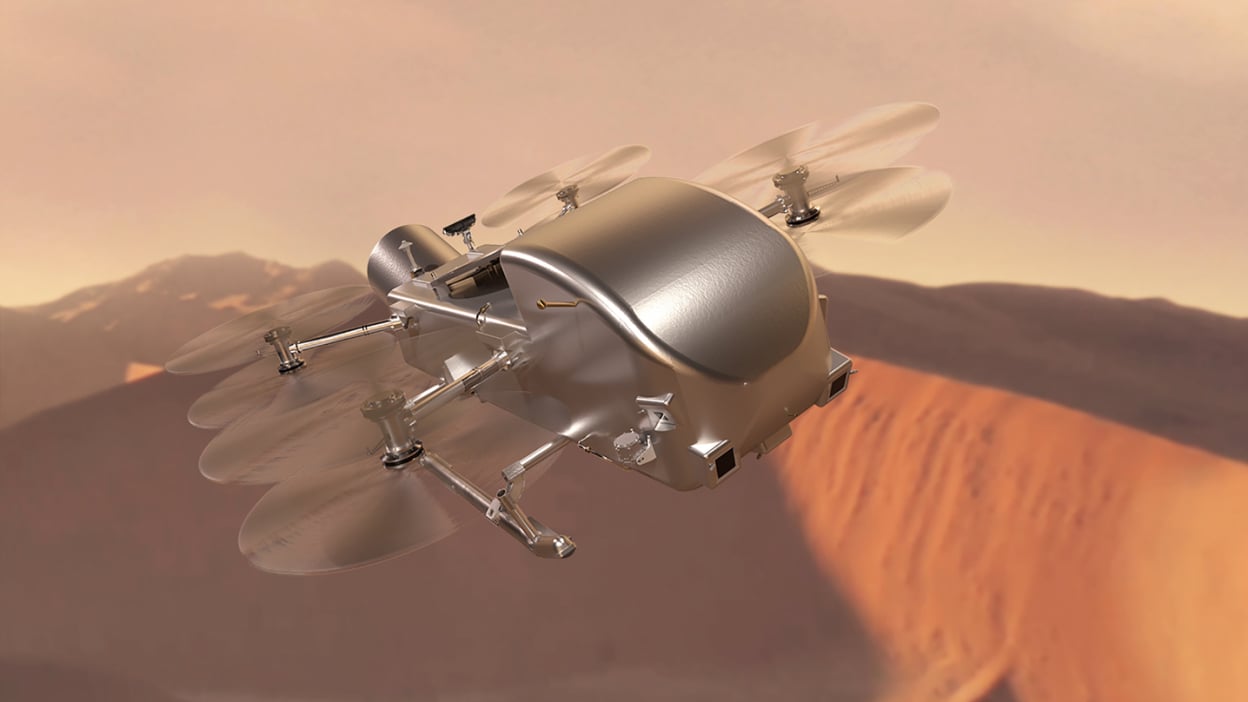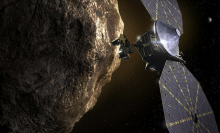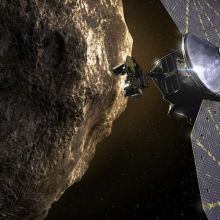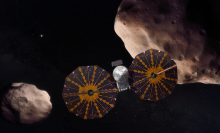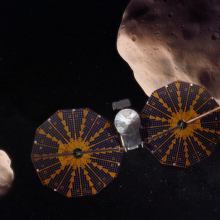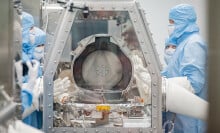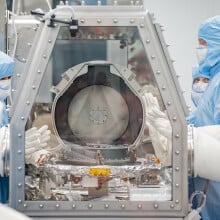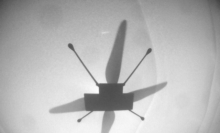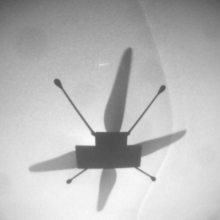NASA's Dragonfly mission sounds like science fiction. But it's real.
The space agency will launch the car-sized craft, fitted with eight spinning rotors, to one of the most intriguing worlds in our solar system, Saturn's ocean- and dune-covered moon, Titan. It's a frigid realm where methane, not water, fills lakes and seas, and where the dunes are teeming with the organic ingredients needed for life (as we know it) to develop.
NASA determined that Dragonfly aced its preliminary design stages, and on Nov. 28 gave the thumbs up for this "dual-quadcopter" endeavor to proceed to its final construction. The flying craft is uniquely designed for this mission, as it will explore hundreds of miles of Titan's terrain. Over a planned mission of close to three years, Dragonfly will take off and land at multiple sites as it investigates the "prebiotic" conditions that could have provided the brew for life to eventually form in our solar system.
"This really is the only place in the solar system that has this kind of chemistry," Elizabeth "Zibi" Turtle, a planetary scientist at Johns Hopkins University Applied Physics Laboratory and the principal investigator of the mission, told Mashable.
Indeed, Titan's dunes are covered in an ice-water crust, allowing carbon-rich molecules (organic molecules contain carbon; our bodies, for example, are filled with carbon) to mix with water. This world harbors a glimpse into early Earth — and how the ingredients for life may have spawned in such environments. "Organic molecules are the building blocks for life, and their presence on Titan adds to its intrigue – what compounds are on Titan, and what might they form?" the University Applied Physics Laboratory, often a partner on NASA missions, asks.
Although Dragonfly is primarily designed to find these answers, it also can assess if Titan is a habitable world (meaning whether it could host living organisms) and look for potential signatures of life.
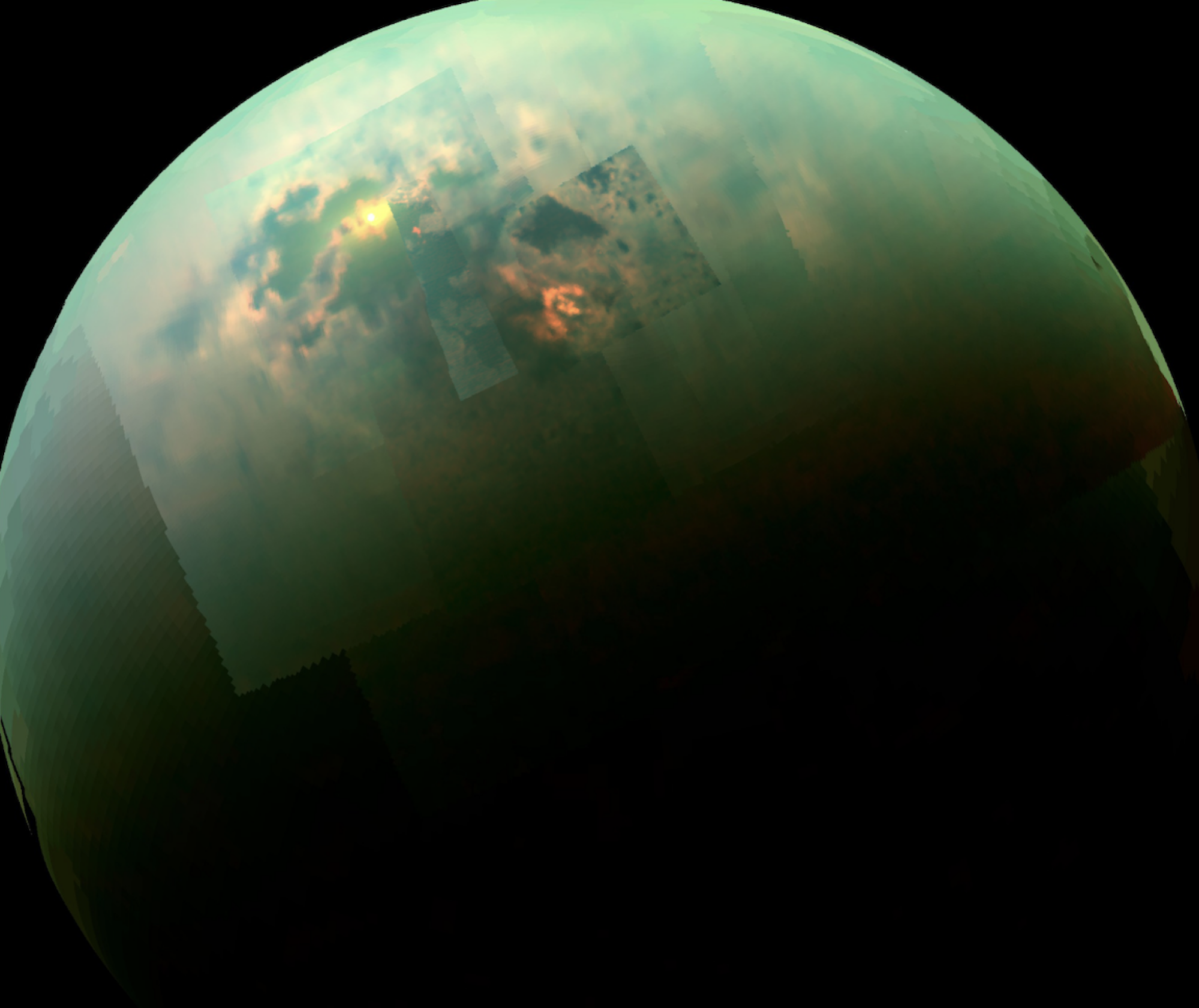
How NASA will explore Titan
Dragonfly is scheduled to launch in 2028. It will land in equatorial Titan, home to expansive dunes, in the mid-2030s. It's a mission to a never-explored world with a spacecraft capable of flying some six miles in a day amid temperatures dipping to -290 Fahrenheit.
"It's a very cold environment," Turtle said. "It's almost unimaginably cold."
Yet the endeavor isn't quite as dicey as it might sound. "It's clearly a bold mission architecture," Turtle noted. "But most of the technologies already exist." For example, the Dragonfly's cameras have already been tested in harsh Martian environs aboard NASA's Mars rovers. Meanwhile, the spacecraft's "Gamma-ray and Neutron Spectrometer," which will detect Titan's surface composition, has been proven in missions to Mars, Mercury, the moon, and different asteroids. Dragonfly is nuclear powered, using a system quite similar to the Mars rovers (a "Multi-Mission Radioisotope Thermoelectric Generator").
"It's almost unimaginably cold."
And the craft will have experienced Titan-like environs before launching. The Applied Physics Laboratory built a "Titan Chamber," a spacious 15-foot-sided cube, to simulate frigid conditions on this distant world, some 800 million miles away (this distance varies based on Earth's and Saturn's orbits). Engineers recently tested, with success, the electronics for Dragonfly's essential rotors, Turtle said.
Once on Titan, the craft's rapidly spinning blades will have little trouble lifting the nearly 1,000-pound (450 kilogram) Dragonfly through the air. That's because Titan's atmosphere is four times as dense as Earth's, providing the blades ample air to blow downward and generate lift. Dragonfly can reach over 13,100 feet (4,000 meters) high. "On Titan, the atmosphere does much of the work for us," Turtle explained. What's more, this moon, much smaller than Earth, has little gravity to overcome.
Out on the moon's expansive dunes, Titan will need to navigate on its own. To prepare Dragonfly for autonomous flight, engineers have tested Dragonfly models in desert environments, such as in Imperial Dunes, California, a demonstration you can watch below. So far, these test drones have logged over 100 flights, providing invaluable experience and data for the real, extraterrestrial mission.
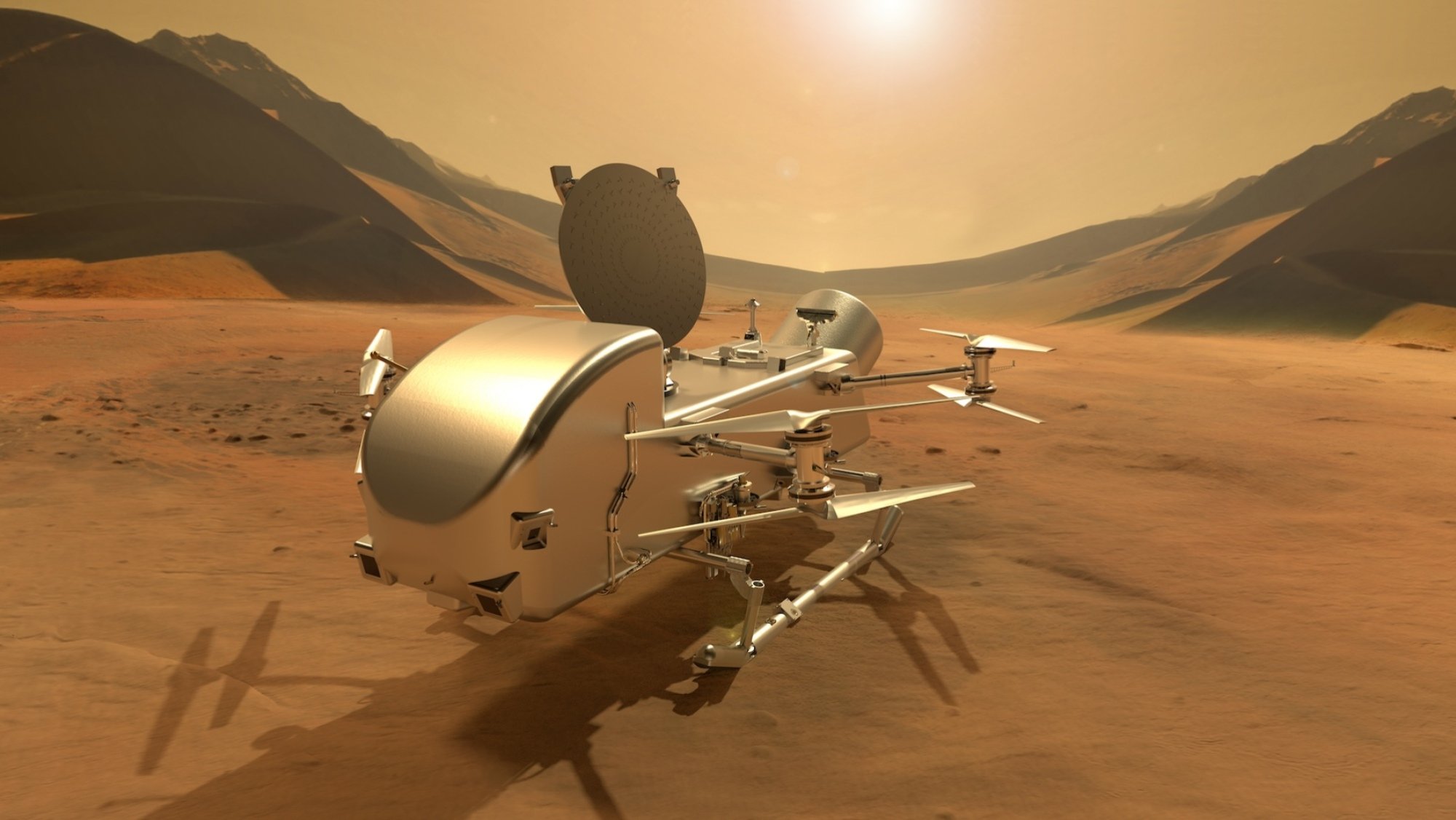
Want more science and tech news delivered straight to your inbox? Sign up for Mashable's Light Speed newsletter today.
The $850 million craft, after journeying through deep space and parachuting through Titan's atmosphere, will take flight above the equator, ultimately settling down upon broad, flat-topped dunes near an impact crater. Then, for the first time, the rotorcraft will begin whizzing around the terrain of another world, taking breaks to recharge and perform research, before lifting off into the dense Titan sky once again.
Topics NASA
